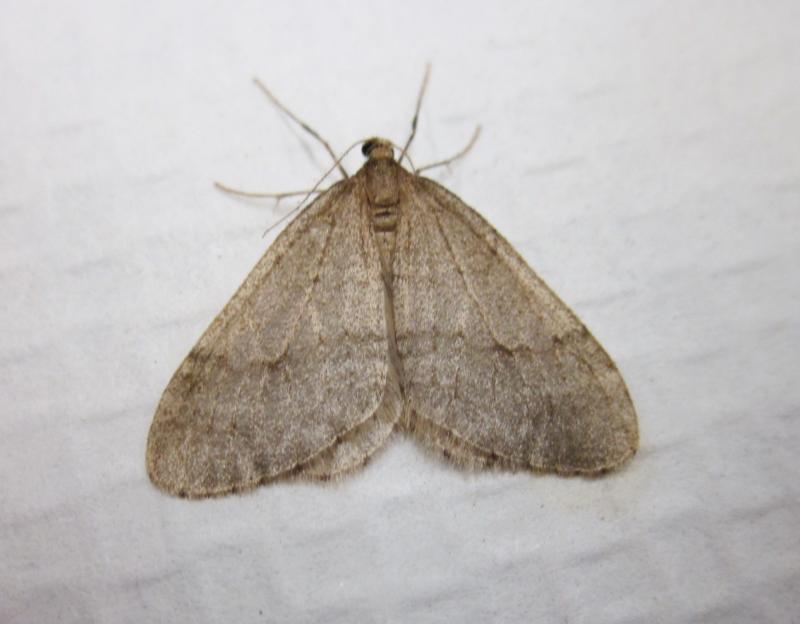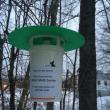Be on the lookout for winter moth
 The Maine Forest Service has left a trap like this one in Wiscasset and elsewhere in the region, to help gauge the presence of the invasive winter moth. Courtesy of the Maine Forest Service
The Maine Forest Service has left a trap like this one in Wiscasset and elsewhere in the region, to help gauge the presence of the invasive winter moth. Courtesy of the Maine Forest Service
 The winter moth has been found in Lincoln County and elsewhere on Maine’s coast and a bit inland. Courtesy of the Maine Forest Service
The winter moth has been found in Lincoln County and elsewhere on Maine’s coast and a bit inland. Courtesy of the Maine Forest Service
 The Maine Forest Service has left a trap like this one in Wiscasset and elsewhere in the region, to help gauge the presence of the invasive winter moth. Courtesy of the Maine Forest Service
The Maine Forest Service has left a trap like this one in Wiscasset and elsewhere in the region, to help gauge the presence of the invasive winter moth. Courtesy of the Maine Forest Service
 The winter moth has been found in Lincoln County and elsewhere on Maine’s coast and a bit inland. Courtesy of the Maine Forest Service
The winter moth has been found in Lincoln County and elsewhere on Maine’s coast and a bit inland. Courtesy of the Maine Forest Service
Entomologist Charlene Donahue of the Maine Forest Service doesn’t want the state to take the hit Massachusetts did from the winter moth. Thousands of acres of Massachusetts trees were lost to the insect that eats leaves while it’s a caterpillar.
The caterpillars favor oak trees and also have a taste for trees and bushes that grow two of Maine’s favorites — apples and blueberries.
The moth has made it to Maine, hitchhiking in soil and plants brought into the state, Donahue said Dec. 18. Now she and the agency where she works are taking steps to help prevent major problems. But they need our help.
The Forest Service wants to hear from anyone who spots the moth. The reported sightings will combine with moth trappings going on this month in Wiscasset, Boothbay and elsewhere to help determine where the moths are gaining ground.
The males are small, tan and, being moths, they are attracted to lights. Females are flightless so would be seen on the trees.
“They look like mosquitoes with fur coats,” Donovan said.
Area residents have been responding to the state’s request. So far in this year’s round, Donahue said 13 reported sightings have come in from Boothbay Harbor, including three reports of 51 moths or more, and four reports of 21 to 51 moths; Boothbay, with five reports of varying numbers of moths; and Dresden, Alna, Bristol, Waldoboro and Nobleboro each with a report of small numbers of moths spotted.
The state has also received a report of 21 to 50 moths being spotted in Wiscasset’s and Dresden’s Sagadahoc County neighbor, Woolwich.
The state restarted its search for the winter moth last year after putting out traps for it in 2005 and 2006. Then, the only moths found in Lincoln County were in Bristol.
The 2013 trappings caught 46 moths in Lincoln County, including 12 in Boothbay, 18 in Bremen, 13 in Bristol, two in Edgecomb and a lone moth caught in Damariscotta. Traps in Wiscasset, Waldoboro and Somerville caught no moths. One in Woolwich caught 19.
The biggest threat appears to be on Maine’s southern coast, particularly in towns where more people are likely to have their second homes, Donahue said. The moths’ cocoons look like clumps of soil, so when someone brings a plant or tree into Maine to transplant it, the cocoons may come along undetected.
“It’s not (people’s) fault,” she said. “You don’t even know that (the cocoons) are there.”
Once here, though, the moths multiply, which can lead to infestations.
What does the state do when it decides it’s time to take action against the moths in one town or another?
There’s a biocontrol measure, a small species of fly that states enlist in stemming a white moth onslaught.
Through a series of steps, the flies wind up inside the caterpillar while it’s in its cocoon. Then they eat the caterpillar, from the inside.
It takes years after the flies’ introduction to reduce the number of the moths in an area, Donahue said. That’s because the moths greatly outnumber the flies that are brought in to kill them. A release consists of 2,000 flies Maine gets from the University of Massachusetts. Other states need the flies, too, which impacts the number each can receive.
Biocontrol efforts can reduce a winter moth population, but not wipe it out.
“They’re here. They’ll never go away,” Donahue said.
Fighting invasive species like the winter moth helps protect Maine’s $8 billion forest industry that is linked to 38,789 jobs, Gov. Paul R. LePage states in a Dec. 8 press release.
“Public involvement will help professionals combat and minimize the destructive potential of this and other invasive species,” LePage said.
“Reports from the public are critical to getting the bigger picture of this insect’s distribution,” Walt Whitcomb, commissioner of the Maine Department of Agriculture, Conservation and Forestry, states in the same release. “A healthy forest is key to Maine’s forest economy. Having citizen involvement in monitoring invasive pests is important to the future of rural Maine.”
Report sightings by taking an online survey at: http://www.maine.gov/dacf/wintermothsurvey or by calling 207-287-2431.
Event Date
Address
United States

























